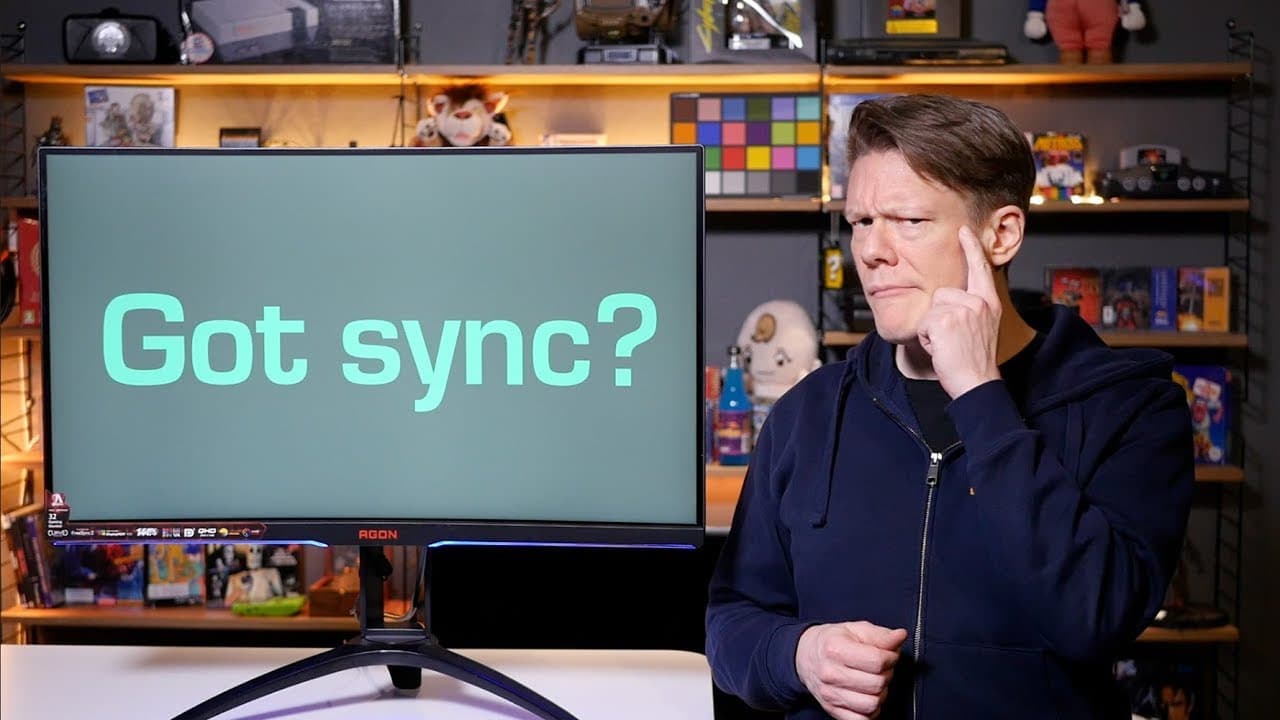Adaptive synchronization means that the screen can adapt its update cycle to the ever-changing rendering frequency from the graphics card. We can match the screen frequency in Hz (Hertz) against the computer’s FPS (frames per second).
It started in earnest a few years ago when Nvidia launched one of the first screens with G-Sync, the Asus ROG Swift PQ278Q, and since then it has continued. G-Sync is Nvidia’s very own technology for adaptive synchronization. It soon got a competitor from AMD in the form of Freesync. A technology AMD instead based on open standard in the form of VESA Adaptive Sync from Displayport version 1.2a. A technology that was primarily developed to save energy in portable devices by dynamically changing the frequency of the panel.
Freesync has since become AMD’s form of official approval, but in popular parlance – or perhaps more correctly forum talk – “Freesync” and “VESA Adaptive Sync” refer to the same thing and function. This was 2014 and in 2015 the editors received the first two Freesync screens: LG 34UM67 and Acer XG270HU.
When adaptive synchronization came, the technology quickly became both acclaimed and questioned. Acclaimed and questioned on several different levels as well. As well as when adaptive sync adds some benefit to you who play games, as a broader discussion about how products, business strategies and various different variants make things far more messy and even more infected than it should be.
Core question: G-Sync or Freesync?
The answer to the headline above was long simple as Nvidia G-Sync only works with Nvidia’s graphics chips and Freesync / VESA Adaptive Sync only worked with AMD. Nvidia opted out of support for VESA Adaptive even though it soon became part of the Displayport standard. If you, as the owner of Nvidia’s graphics card, wanted to use adaptive synchronization, there is only a limited range of G-Sync screens available.
Old School. Asus PG278Q from 2014 – SweClocker’s first test of G-Sync
But then everything changed during CES 2019 when Nvidia now announces that a new driver is opening up to run VESA Adaptive Sync or as AMD calls it Freesync. As long as you have a graphics card from the Pascal or Turing generation then. If you are sitting on a graphics card in the Geforce GTX 900 series and older, you are still locked to G-Sync only.
AMD’s strategy with an open standard has both paid off but also given the technology a certain tarnished reputation. Today, anyone can build a screen with VESA Adaptive Sync and the feature is standard.
It is largely not possible to build a screen without VESA Adaptive Sync being there in some way with the circuit sets and system circuits sold directly for installation in the monitors. Therefore, until January 15, there were several hundred screens – many of them good and useful – with a popular feature that Nvidia graphics cards can not use.
“AMD Freesync” – has no meaning today
The downside of this open standard is that anyone can build screens with adaptive synchronization. But there is not much that guarantees that the product itself is good. On the contrary, tests show that there are often problems with screens based on VESA Adaptive Sync, even those with official AMD Freesync labeling. Flicker, nicks, lags and shadows in motion are among the problems that have plagued several, though not all, screens with the technology. There, AMD’s first intention that the Freesync stamp should in some way guarantee quality has been lost.
During the test of the Asus PG27UQ, it emerged that the latest G-Sync module is based on a complicated FPGA and adds almost SEK 5,000 to the final price.
Nvidia’s strategy is based on tailoring the G-Sync function to clear requirements to avoid the type of problems that can arise when varying the frequency of a panel. A strategy that in turn provides higher prices and also reliability. G-Sync monitors are highly consistent in how they work. But also criticized for its secrecy and limited supply. It is entirely up to Nvidia’s will what works and what does not.















